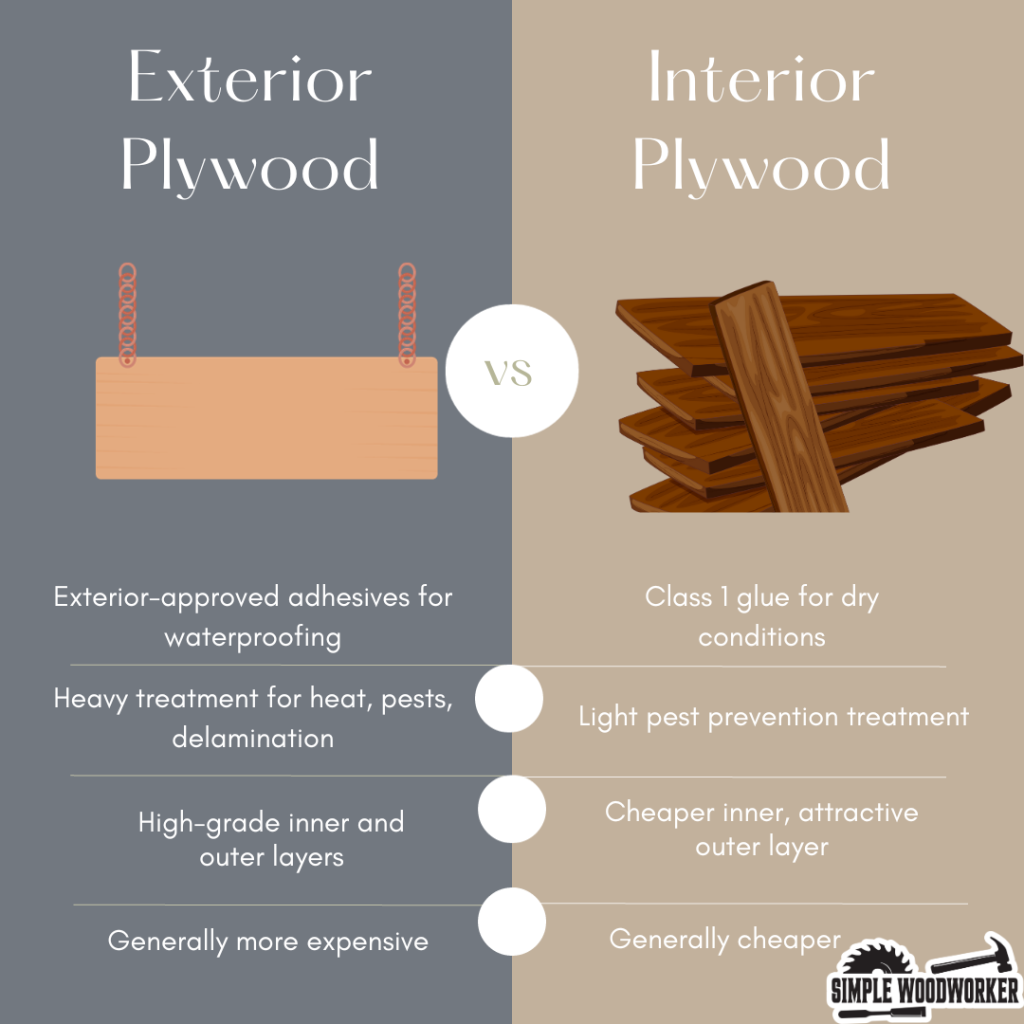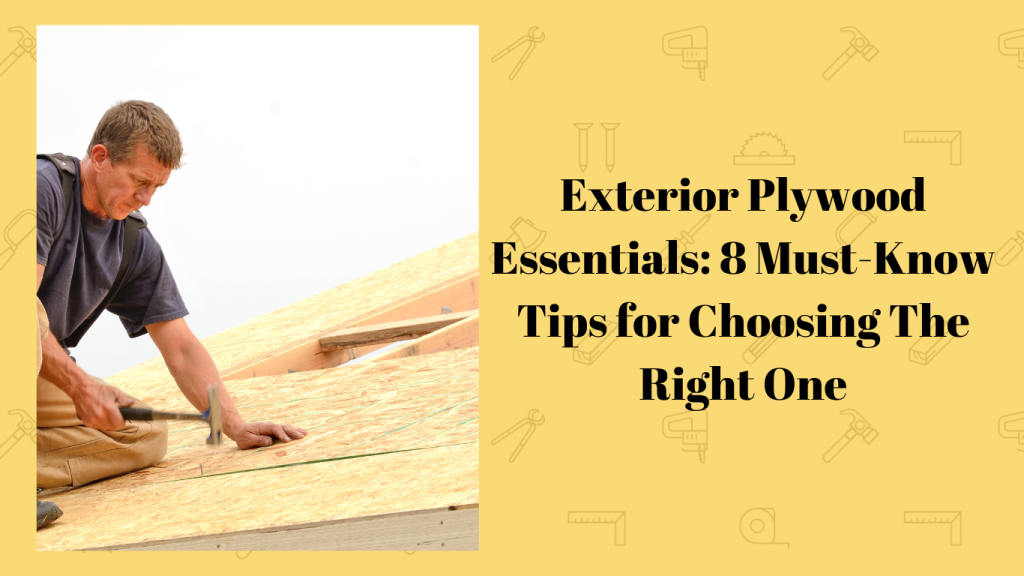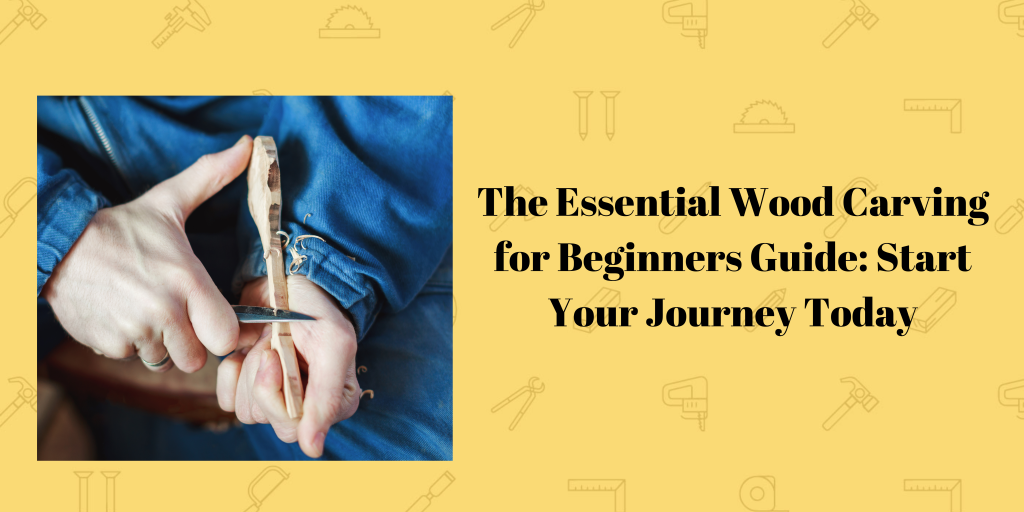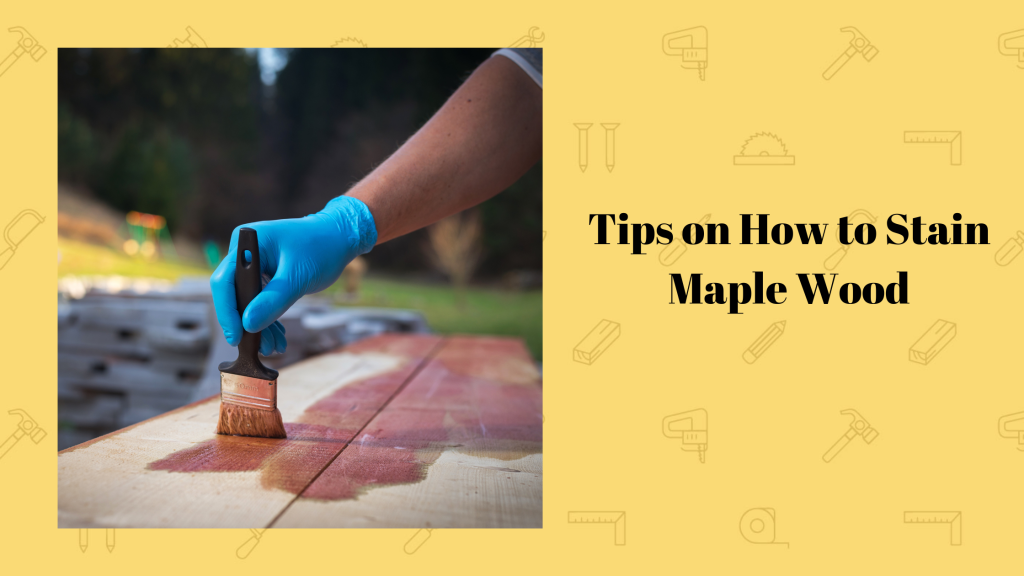The most important tip for choosing exterior plywood is minding the grain. There are three grades of exterior plywood, categorized by the wood’s quality and bonding process.
With over 20 years of experience as a carpenter, I’ve mastered making outdoor furniture with plywood. I’ve learned to select, construct, and stain plywood without mistakes. With my journal of failures and wins, I can confidently pick the perfect exterior plywood for any project.
Before writing these tips, I consulted my decade-old woodworking journal. I gathered the findings from each lesson and set to work creating this guide.
Let’s get started
The Woodworker’s Guide to Choosing Exterior Plywood
When choosing plywood for an outdoor project, you should always consider its capability. Your chosen exterior plywood should withstand the typically harsh conditions of exterior settings.
Here are eight factors you should consider before saying yes to the board:
1. Confirm the grade
Exterior plywood is divided into A-grade, B-grade, C-grade, and D-grade.
A-grade exterior plywood is the highest quality since it comes from high-quality wood. It is also free from imperfections either, making it perfect for high-end outdoor furniture.
B-grade exterior plywood comes from lower-quality wood, so it has some splits and knots. I use it for rough construction projects around the house, like decking and flooring.
C and D-grade have the cheapest and lowest-quality veneers of plywood. C-grade might have knots 1.5 inches in diameter and D-grade has 2.5. I seldom use these grades because they are highly prone to damage, rot, and pests. But when I do, they work well for indoor storage like shelves and cupboards.

2. Inspect the Thickness
If you plan on building floors or another load-bearing project, you should pick out dense plywood sheets. Dense boards handle stress better and are less likely to break under weight.
You can easily assess the plywood weight by lifting the sheet. Or you can check the manufacturer’s density specifications to ensure that you have the right plywood.
3. Check the Finish
The finish of your outdoor plywood directly affects your finished project’s looks. Some boards have patterned surfaces, which have a decorative appeal. And, some are plain and smooth
Always pick out your boards with the final look in mind.
4. Look Out For Cross-graining
Checking the wood’s cross-graining is an effective way to save yourself an unfortunate plywood mismatch
Grain lines may run diagonally or parallel, depending on the manufacturer. However diagonal grain lines are always a plus because it means your project will last a long time without damage.
Cross-grained plywood is less likely to split if you nail the edges.
5. Check for Cavities
Exterior plywood sheets tolerate moisture differently. And, depending on your project, the plywood’s moisture resistance is critical.
Cavities in the sheet are a sign that your plywood can’t handle moisture.
Water-resistant plywood shouldn’t have cavities or end joints so that the sheet’s strength is uniform. This way, it won’t crack when shaped into a curve.
I’ve also learned that waterproofing plywood yourself works well for small, exterior woodwork. And, painting plywood is an effective DIY method of waterproofing it.
6. Check the Fire Resistance
In both outdoor and indoor settings, non-fire-resistant furniture is a safety hazard. This is why you should ensure to work with heat-resistant plywood
You can double-check your plywood by confirming its fire rating. But remember to only buy exterior plywood with a Class A or B fire rating.
7. Treated or Untreated?
Outdoor woodwork is prone to fungal and insect attacks, especially for untreated wood.
If your plywood has no green tint or an oily odor, drop it – it hasn’t been pressure-treated. Untreated wood is also an easy target for rot and pests.
8. Check the Price
When I started constructing with plywood, I would always run into issues with budgeting. I wanted A-grade plywood through and through – even on a non-flexible budget
A decade later, I know when to buy A-grade and when to buy (and stain) B-grade.
When working on living indoor furniture, I reserve A-grade plywood for decorative pieces. And, I use B-grade for everyday pieces.
But for outdoor furniture, I only always use A-grade exterior plywood.
Differences Between Interior and Exterior Plywood
Four factors differentiate interior and exterior plywood. I’ve outlined them in this table to quickly help you spot the differences

Different Types of Exterior Plywood
- Overlay Plywood: Its quality resembles ACX or CDX, meaning it isn’t very durable. But, the overlay is designed with a refined finish.
- Pressure-treated Plywood: It undergoes a special treatment to resist rot and pest damage. Its high density makes it popular for industrial construction
- Oriented Strand Board (OSB): OSB is a plywood bonded to weather-resistant resin. It is perfect for cabinetry and anti-marking.
- Marine-grade Plywood: Marine-grade plywood is a high-quality board designed to resist moisture. It is ideal for outdoor furniture and other applications near high humidity.
TL: DR
The biggest differences between interior and exterior plywood are grade, finish, and cost. And you can choose the right one by paying attention to the manufacturer’s specifications.
While I hope I’ve been able to cover the exterior plywood essentials, I’ve also written a lighthearted particle board vs plywood comparison. Particle board is a cheaper and better alternative for indoor projects, so be sure to read on!

Frequently Asked Questions
How is Plywood Used Outdoors?
Because exterior plywood is weather-resistant, you can use it for outdoor shelving, decks, sheds, and walkways. Its durability allows it to withstand varying temperatures and conditions, making it a reliable choice for outdoor structures. The various grades and types of exterior plywood provide options for different levels of exposure and aesthetic finish, catering to diverse outdoor projects.
Best Type of Plywood to Use Outdoors
The best type of plywood to use outdoors is marine-grade. Since it is designed to withstand harsh conditions, carpenters use it extensively for construction purposes. Marine-grade plywood is fortified against moisture and capable of maintaining its integrity even when submerged in water, making it a premium choice for docks, boats, and other waterfront or water-exposed structures. The superior quality of marine-grade plywood often reflects in its price, but the investment is worthwhile for long-lasting outdoor structures.
What is the Difference Between CDX and Exterior-grade Plywood?
CDX is exposure plywood and exterior grade is outdoor plywood. The core veneers in CDX aren’t as good as those in exterior plywood. But it can’t withstand weather or water for a long time. Exterior-grade plywood has better-quality veneers and adhesives that provide an enhanced resistance against moisture and weather elements compared to CDX.
While CDX may suffice for temporary or concealed applications, exterior-grade plywood stands up to the rigors of outdoor use much more effectively, thereby justifying its preference for visible and enduring outdoor projects.
Is CDX Plywood Good for Outdoor Use?
CDX isn’t ideal for prolonged outdoor use because it uses C and D-grade plywood. But, you can use it for construction applications like roof sheathing and shingle support. While it may serve well in protected or temporary outdoor settings, its susceptibility to moisture and less durable veneers render it less effective for permanent outdoor installations.
Investing in a higher grade of plywood for outdoor use is advisable to ensure the longevity and stability of your project, especially in regions prone to extreme weather conditions or high humidity.
*This post may contain affiliate links. Please see my disclosure to learn more.



